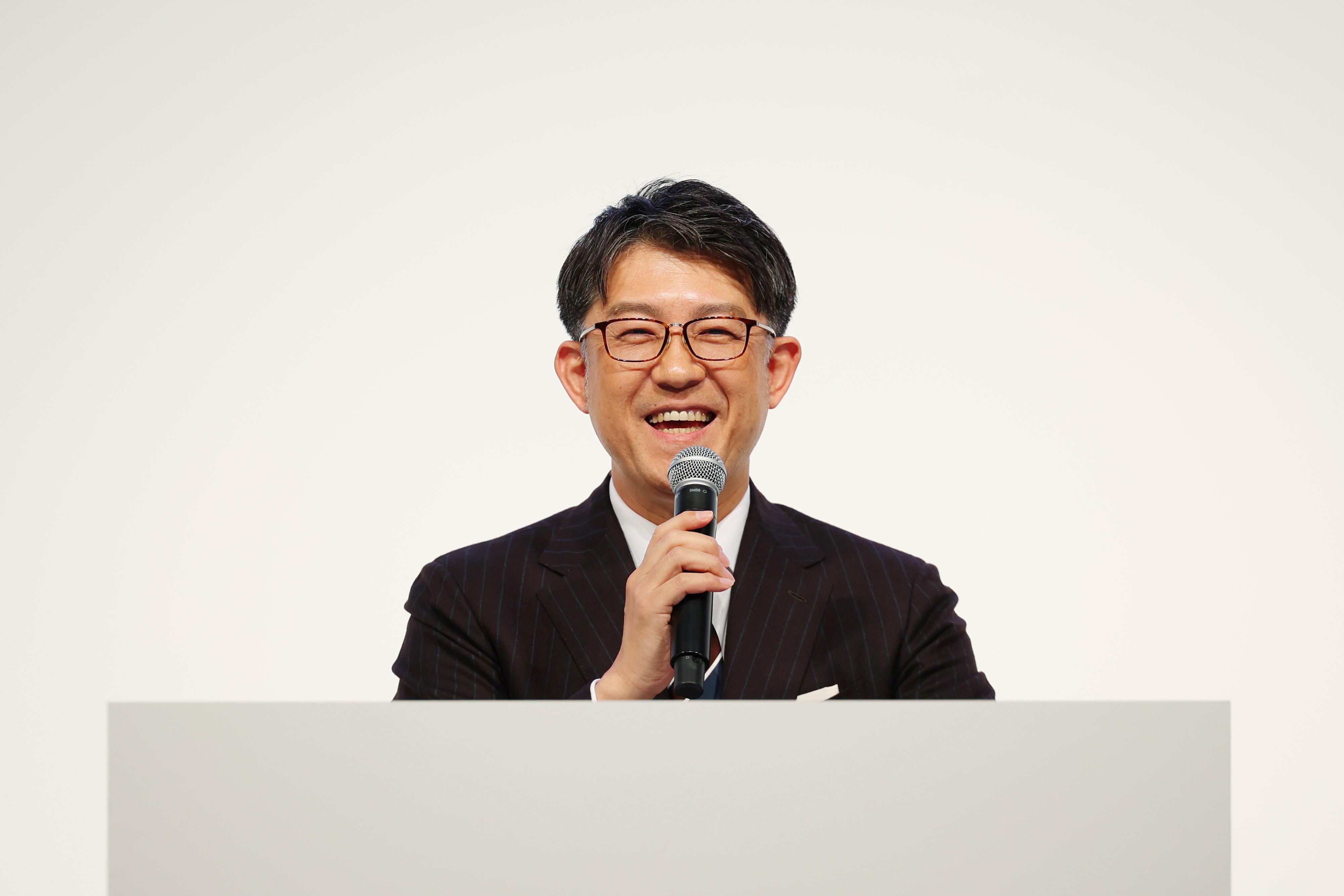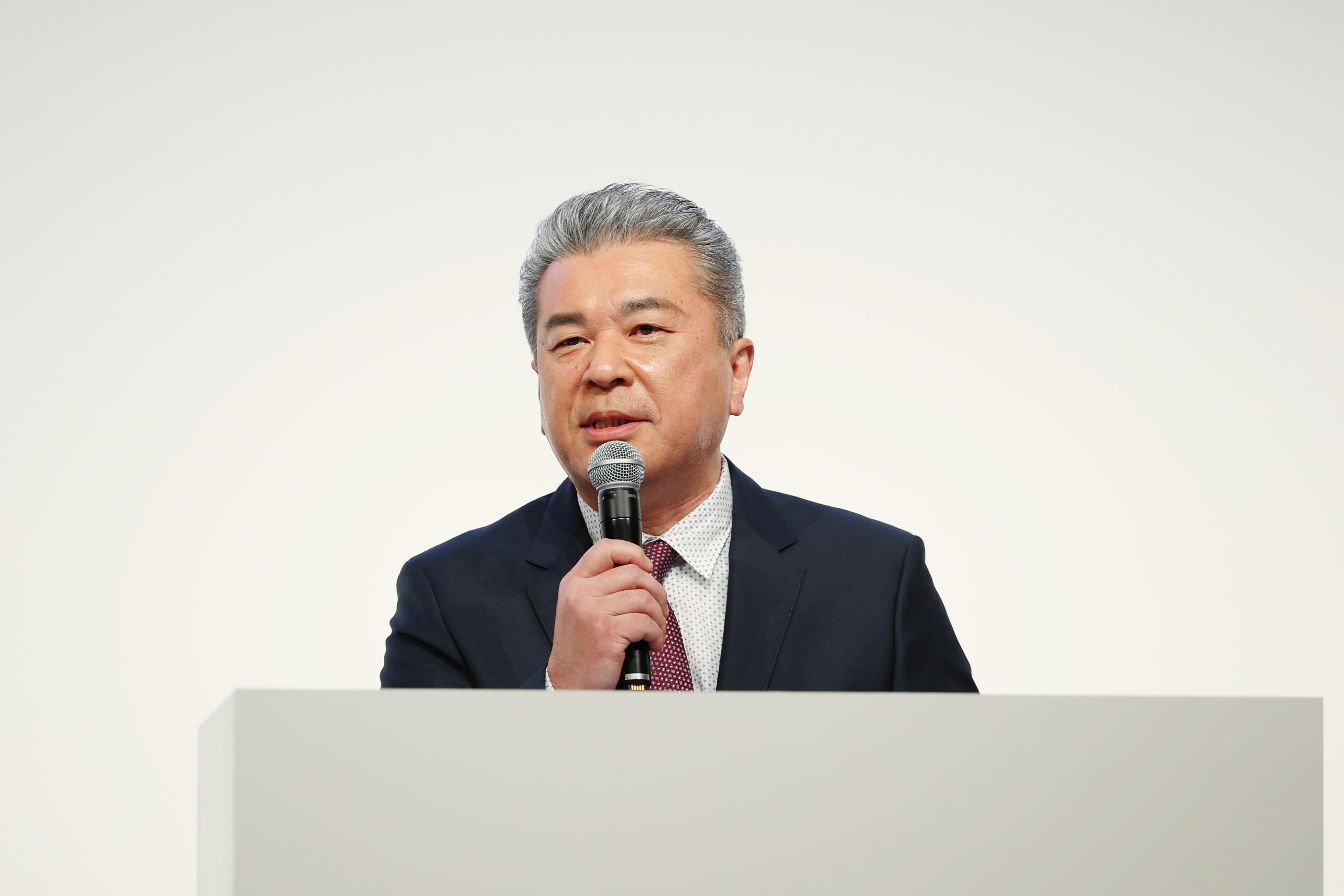
A press conference on February 13 focused on the direction to be taken by Toyota's new management team, allowing each member to outline their vision before reporters.

“Ever-better cars” “Best in town, not best in the world” “Sustainable growth” “For someone other than yourself” …
Akio Toyoda had returned to these words time and again, at speeches and press conferences, after becoming president. Though he expressed them publicly, often they were meant for the people inside Toyota.
Alongside his words, Akio passed down the company’s “philosophy, skills, and conduct” through his actions at the genba. His 13 years at the helm were a time of nurturing talent, a period of efforts devoted to instilling Toyota’s unique values.
Each of the five officers who have vowed to manage Toyota as a team under the new structure has experienced Akio’s vision firsthand in their respective roles.
Despite their different personalities stemming from unique backgrounds and perspectives, the five members revealed many shared values through their individual responses and opening statements.
This article turns the spotlight on the Q&A, broken down into three sections: “the new team’s aims,” “BEV strategy,” and “the future of Toyota’s carmaking.”
The vision behind the new structure
Could you provide more detail on the aims of this structure, with the promotion of two executive vice presidents?
On the Toyota Times News program announcing the leadership change, incoming President Koji Sato spoke of inheriting Akio’s product-centered and region-centered management.
As chief engineer, new Executive Vice President Hiroki Nakajima has been involved in making ever-better cars across a wide range of models, from compact to commercial vehicles.
He will be joined by fellow Executive Vice President Yoichi Miyazaki, who has extensive experience in overseas business, having led Toyota towards being a best-in-town company beloved locally in Asia and other regions.
President Sato explained the intentions behind the new structure, while the vice presidents both shared their ambitions.
Sato

Regarding the roles of the executive vice presidents under our new structure, I see Toyota’s management like a soccer team, with roles that offer the flexibility to change formation as we move forward.
In tackling our three key business areas, it’s crucial that leaders remain firmly rooted in Toyota’s unique genchi-genbutsu approach as they drive specific initiatives.
The initiatives themselves will build on the groundwork that has been laid under President Toyoda.
Our formation change will involve the three current executive vice presidents, who have worked closely with President Toyoda and firmly grasped his vision. They will move into roles leading the frontlines of their respective businesses.
Meanwhile, our new executive vice presidents, Nakajima and Miyazaki, will seek to further advance the product-centered and region-centered approach that currently forms the core of our management.
Inevitably, executive structures tend to be talked about in terms of functions, and in the past leaders thought of themselves as “department heads.”
At Toyota today, we don’t view our roles in this limited way. With this change in particular, we are looking to manage as a team.
We want to think together and act together, taking decisions and actions from a holistic perspective.
Miyazaki

I think the source of our business growth and development to date has been the support of our happy customers.
With this mindset, in each region we have listened to the market and worked with dealers to gradually build up customer trust. This is the best-in-town philosophy and approach that forms part of Toyota’s values.
Moving forward, we need to pursue efforts aimed at transforming Toyota into a mobility company, while also working towards carbon neutrality through initiatives tailored to the energy and infrastructure conditions of individual countries.
To enable this, I believe we will need even closer communication between the regions and our global headquarters, as they work together to boost our frontline execution.
Nakajima

Our duty is the inheritance and evolution of ever-better cars.
I experienced many failures when I worked with President Toyoda, through which I gained new perspectives.
Personally, I want to devote myself to nurturing more young developers who will work hard to make ever-better cars.
What are the challenges and expectations for the Lexus and GR brands? What tasks will be passed on to the two incoming presidents?
Since 2020, Sato has steered the Lexus and GR brands as president of both Lexus International and the GAZOO Racing Company.
Following his appointment as company president, he will pass those batons over to Takashi Watanabe (currently Lexus Electrified Development Div. General Manager), chief engineer of the Lexus RZ, the marque’s first BEV-only model, and Tomoya Takahashi (currently GR Vehicle Development Div. General Manager), who has been involved in developing the GR brand’s vehicles and racing cars.
Watanabe and Takahashi are 50 and 45 years old respectively. Sato explained the reasons for choosing two young successors.
Sato
Both of the newly appointed presidents, Watanabe and Takahashi, are leaders who have spent many years toiling with me on the frontlines to find the best way forward for Lexus and GR.
I think the three of us also share many values, and our visions for GR and Lexus.
I hope that making this structural change and passing the baton will boost the speed of specific, concrete action without compromising the ideas at the root of those values.
Toyota is home to three brands, and I believe we need to develop business strategies that reflect the individual brand portfolios of Lexus, Toyota, and GR.
Both presidents are also very young, with Takahashi at GR still in his 40s. Since the announcement on January 26, I too have been called young in media coverage, though I don’t exactly see myself that way.
Many other people in their 50s also run businesses.
Although the magnitude of Toyota’s mission and this role feels daunting, this is probably the first time that the company has undertaken such a rejuvenation of its management.
However, thanks to President Toyoda’s push to nurture talent over the past 13 years, I am just one among many members capable of taking up the baton.
As I understand it, the decision to appoint me as president was made because I happen to be the right person to lead the company in tackling the challenges we currently face in our business.
Roles and formations should adapt flexibly to the challenges being faced. In the 13 years of Akio Toyoda’s presidency, I believe we have become a company capable of such a management style.
This is also part of what I want to pass on to the new presidents of Lexus and GR.

